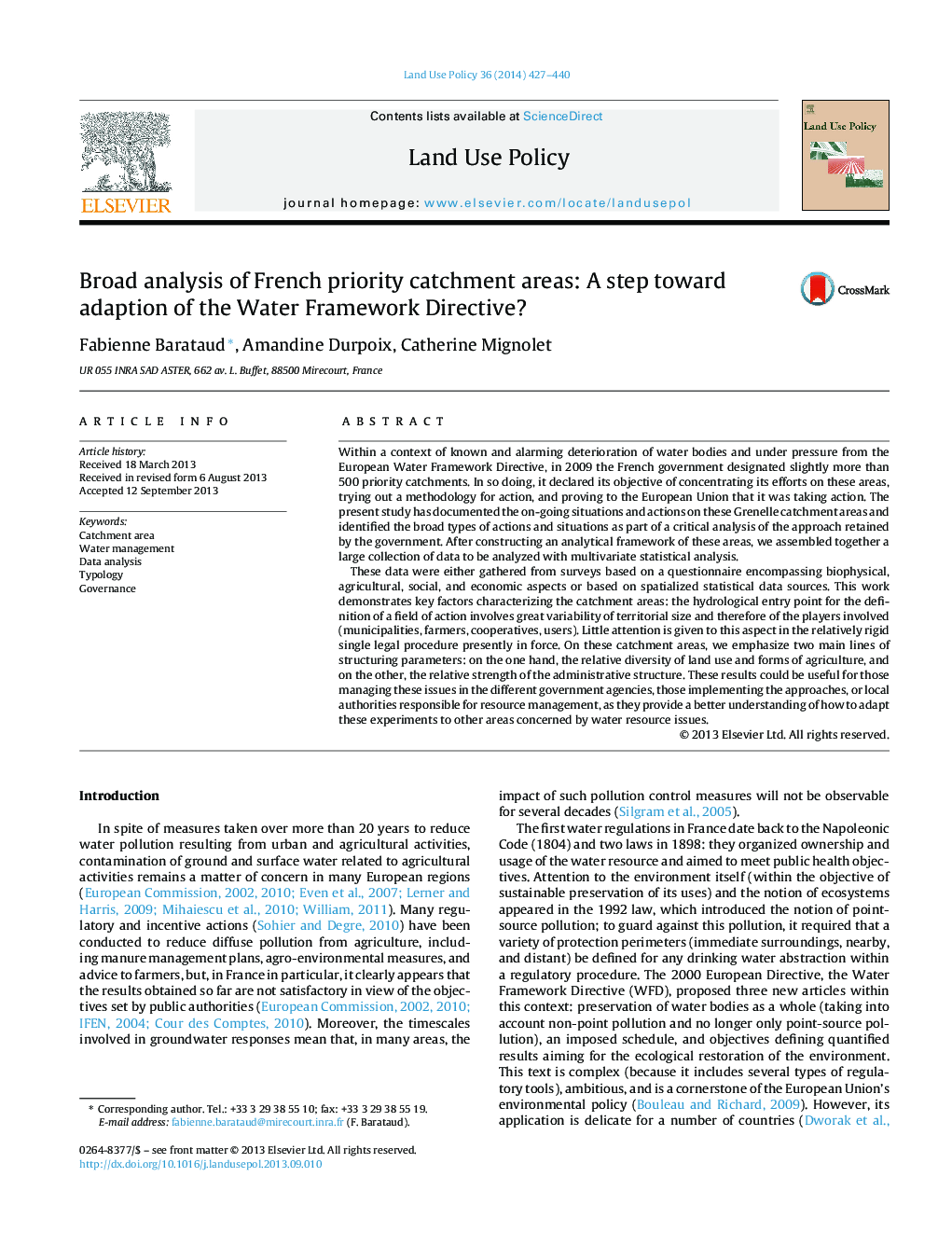| Article ID | Journal | Published Year | Pages | File Type |
|---|---|---|---|---|
| 6549006 | Land Use Policy | 2014 | 14 Pages |
Abstract
These data were either gathered from surveys based on a questionnaire encompassing biophysical, agricultural, social, and economic aspects or based on spatialized statistical data sources. This work demonstrates key factors characterizing the catchment areas: the hydrological entry point for the definition of a field of action involves great variability of territorial size and therefore of the players involved (municipalities, farmers, cooperatives, users). Little attention is given to this aspect in the relatively rigid single legal procedure presently in force. On these catchment areas, we emphasize two main lines of structuring parameters: on the one hand, the relative diversity of land use and forms of agriculture, and on the other, the relative strength of the administrative structure. These results could be useful for those managing these issues in the different government agencies, those implementing the approaches, or local authorities responsible for resource management, as they provide a better understanding of how to adapt these experiments to other areas concerned by water resource issues.
Related Topics
Life Sciences
Agricultural and Biological Sciences
Forestry
Authors
Fabienne Barataud, Amandine Durpoix, Catherine Mignolet,
